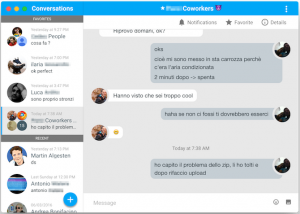

The features of the release include the Dock which was a new way of organizing one's Mac OS X applications on a user interface, and a change from the classic method of Application launching in previous Mac OS systems. Mac OS X was renamed OS X in 2011 to macOS in 2016 the latest version is macOS Ventura, which was released in October 2022. In the years following the release of Mac OS X 10.0, Apple continued to refine and improve the operating system, releasing updates and new versions that added new features and improved performance and compatibility. The operating system also included built-in support for networking protocols such as TCP/IP and PPP, as well as for USB and FireWire devices.

Some of the key features of Mac OS X 10.0 included the Aqua user interface, which introduced translucent menus, drop shadows, and other visual effects the Dock, a new way of launching and switching between applications and a new file system called HFS+. The release was met with mixed reviews, with some users praising the new features and stability, while others criticized the lack of compatibility with older Mac applications. Mac OS X 10.0 was released to the public on March 24, 2001, after several months of beta testing. The development team faced significant challenges in merging the classic Mac OS with the new Unix-based architecture, as well as in creating a modern user interface that would be familiar to Mac users. The initial development of Mac OS X was led by Avie Tevanian, who had previously worked at NeXT and had played a key role in the development of NeXTSTEP. The development of Mac OS X 10.0 began in 1998, after Apple acquired NeXT Computer, which was founded by Steve Jobs after he left Apple in the mid-1980s.
#Yakyak mac os x code
Six months after its release, Mac OS X 10.0 was succeeded by Mac OS X 10.1, code named Puma. This was important for compatibility reasons while many Mac OS 9 applications could be run under Mac OS X in the Classic environment, some, such as applications that directly accessed hardware, could only run under Mac OS 9. The core components of Mac OS X were open sourced as Darwin.īoxed releases of Mac OS X 10.0 also included a copy of Mac OS 9.1, which can be installed alongside with Mac OS X 10.0, through the means of dual booting (which meant that reboots are required for switching between the two OSes).

Many technologies were ported from the classic Mac OS, including Sherlock and the QuickTime framework. It introduced the Quartz graphics rendering engine for hardware-accelerated animations. It was derived from NeXTSTEP and FreeBSD, and featured a new user interface called Aqua, as well as improved stability and security due to its new Unix foundations. Mac OS X was Apple's long-awaited successor to the classic Mac OS. It was released on March 24, 2001, for a price of $129 after a public beta. Mac OS X 10.0 ( code named Cheetah) is the first major release of Mac OS X, Apple's desktop and server operating system.


 0 kommentar(er)
0 kommentar(er)
